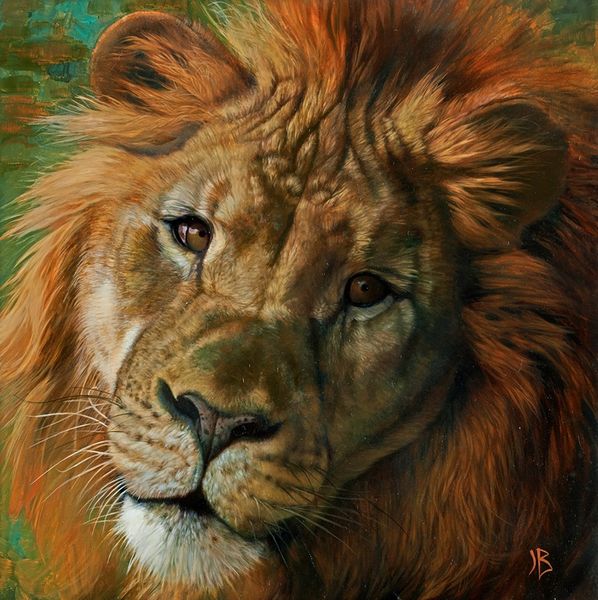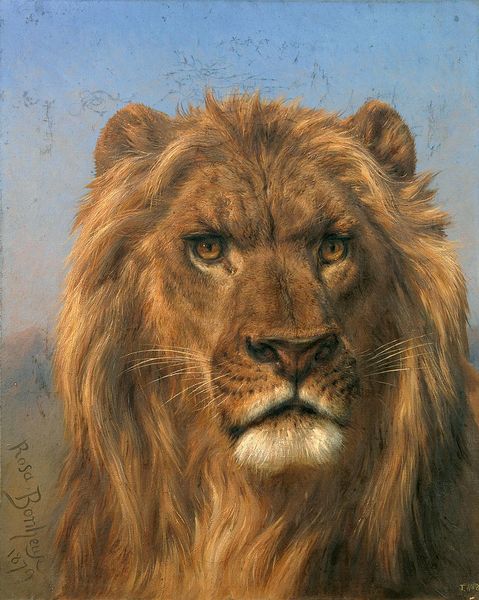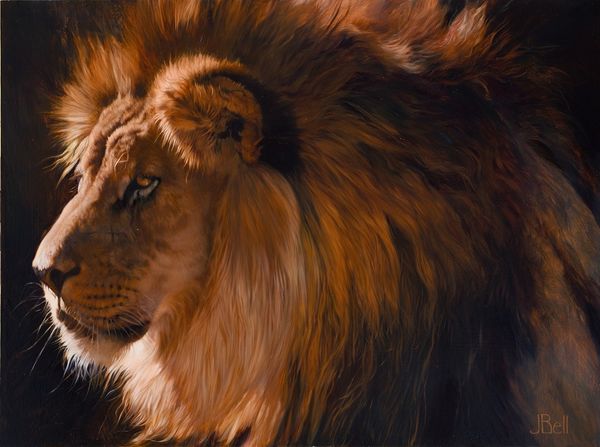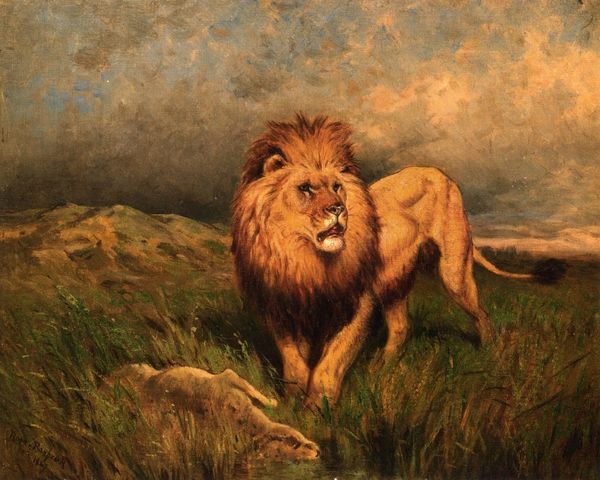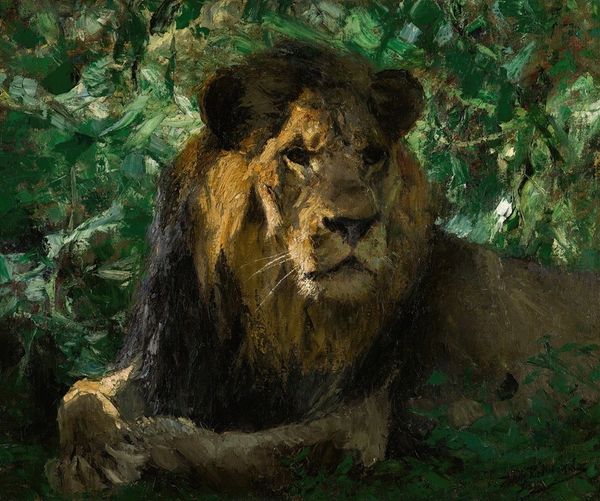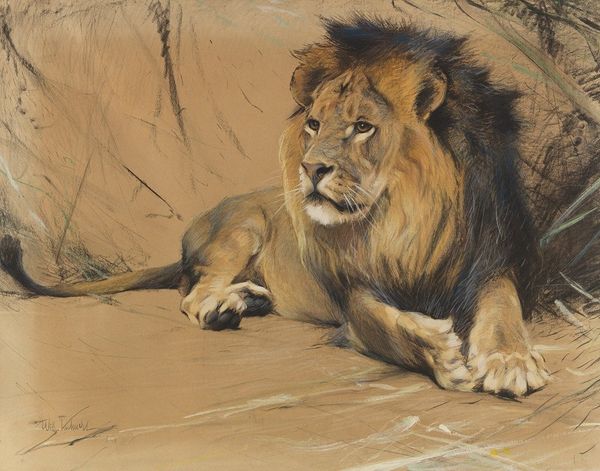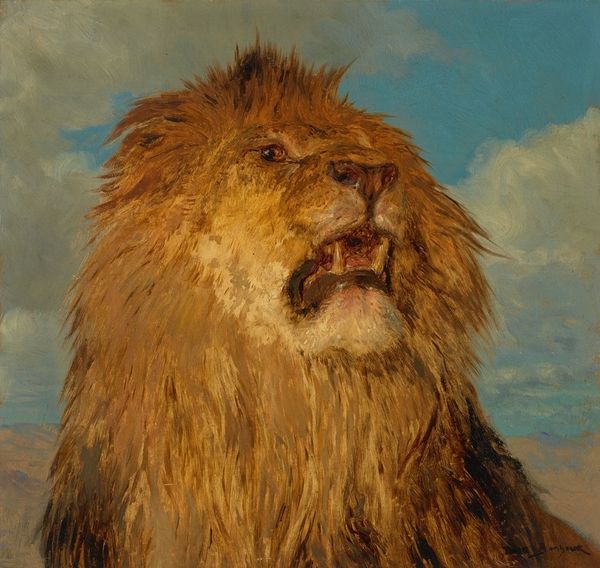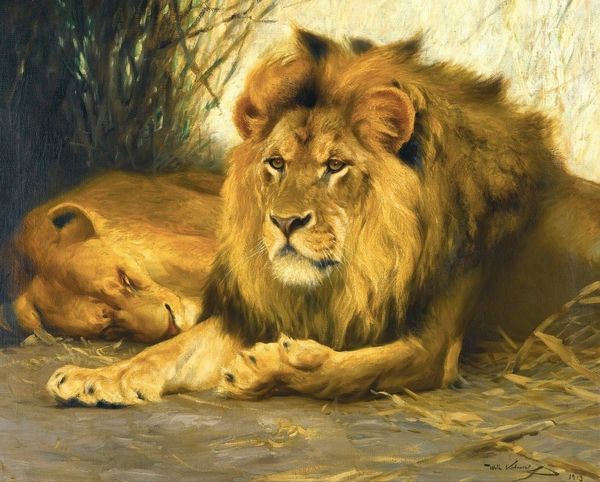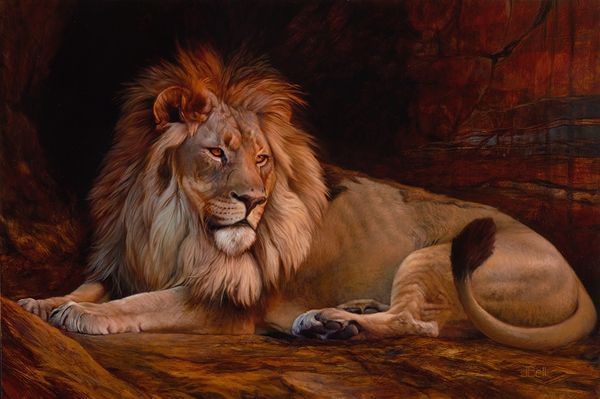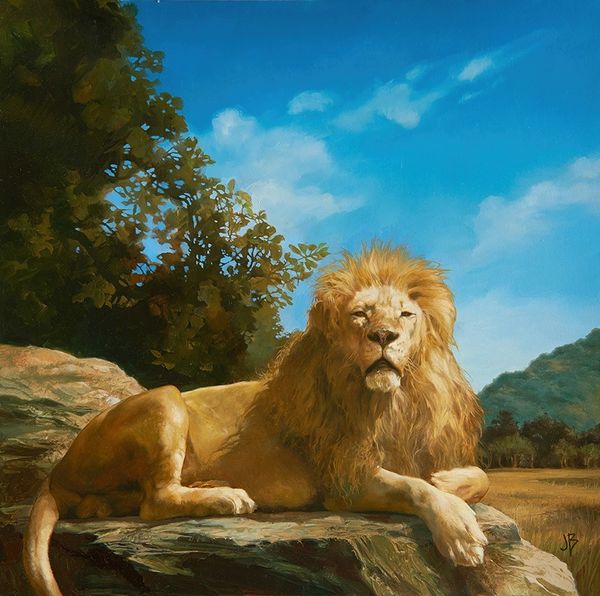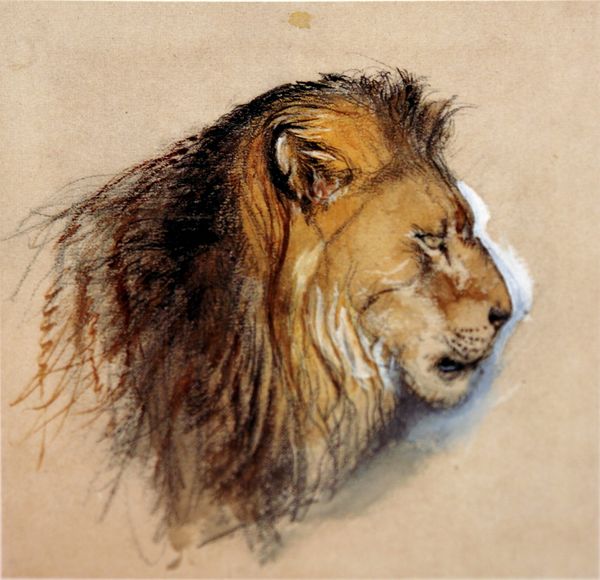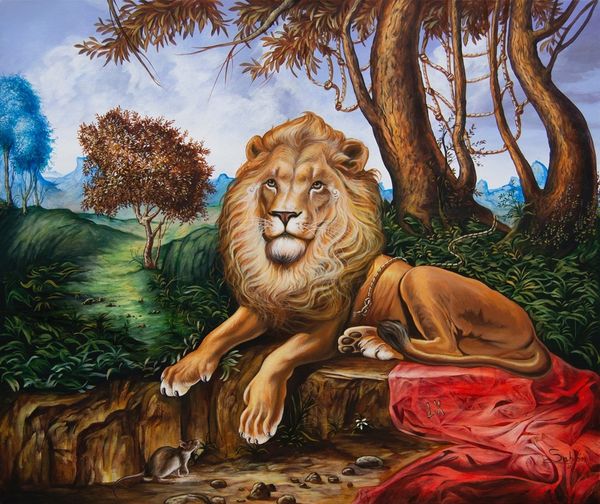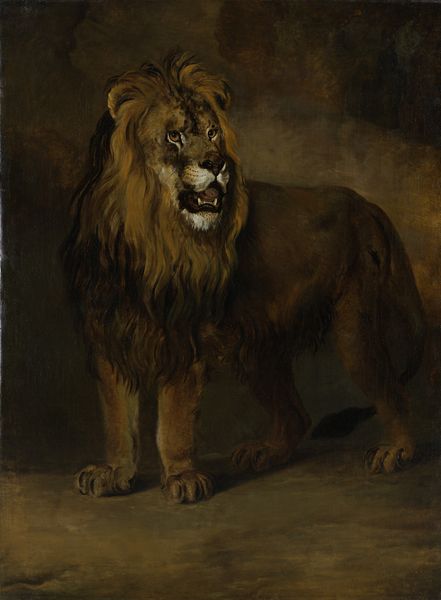
painting, oil-paint
#
portrait
#
animal
#
painting
#
oil-paint
#
oil painting
#
animal portrait
#
painting painterly
#
realism
Copyright: Public domain
Curator: Gosh, that’s a lot of lion. Is it staring at me, or am I staring at it? It has that "come at me" vibe, though. Intense, those eyes are totally intense. Editor: You're right, quite the regal fellow. What you're seeing now is "A Lion's Head" an oil painting created in 1878 by Heywood Hardy, an English artist known for his animal portraits, and scenes of rural life. Hardy came from a family of artists, and his works were widely exhibited during his time, gaining him recognition for his ability to capture the character and presence of animals with remarkable detail. Curator: Oh, rural life and *that* face... there’s a juxtaposition for you. Makes me wonder about our relationship with wildness, with power. Because on one level it seems so contained, so... domesticated, somehow. It almost feels like he has a place to be after this portrait is over. Is that weird? Editor: Not at all. It speaks to a broader fascination with lions, which existed long before this particular canvas was even stretched. They represent authority and status, and there's something decidedly hierarchical in the way they have been depicted and received throughout Western art history. Here, in England, in the Victorian period, lions, especially male lions, symbolized courage and were employed quite widely to legitimize power through statuary or popular prints. Curator: So, more symbolic muscle flexing than pure animal admiration? I do wonder about the lion himself. You can tell a lot about an artist by the animal portrait they choose. So you have me wondering why an artist would paint a lion? Or the person who bought the portrait. Maybe the lion is there so the people feel safe by comparing themselves with its strength? Editor: Perhaps that too. You know, as symbols of the British Empire, lions in the Victorian era carried enormous ideological weight. And, considering this context, Heywood's choice to paint him might resonate in distinct social or political ways at the time this painting was made, even though it seems simply an innocuous "animal portrait". Curator: Well, it’s still one heck of a gaze to carry all that symbolism. Suddenly, I am quite self-conscious under it’s gaze. Editor: Agreed, there is something magnetic about that stare. I hope now our listeners are encouraged to bring their interpretations to its gaze, too. Curator: Me too. The Lion definitely gives you permission.
Comments
No comments
Be the first to comment and join the conversation on the ultimate creative platform.
